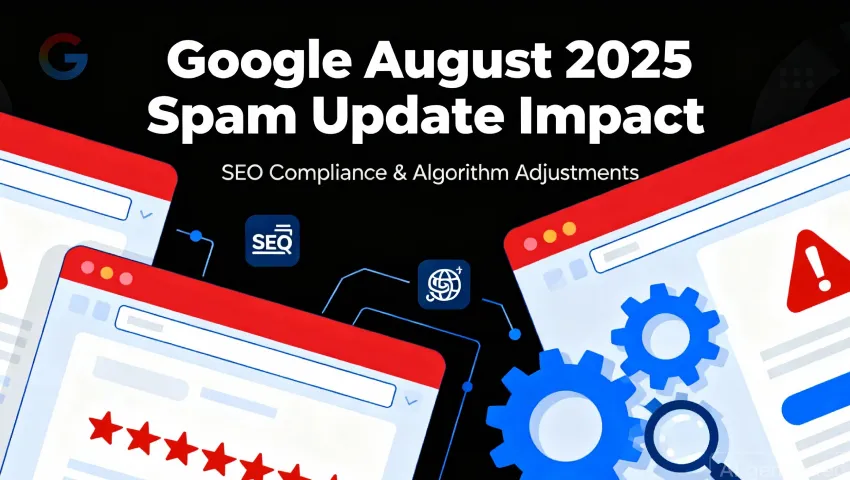Google’s August 2025 Spam Update rolled out globally at the end of August and continued through most of September. It targeted spammy, low-value, and manipulative content that clutters search results. The goal was simple, make it harder for spam to rank and make it easier for helpful, people-focused content to show up.
Table of Contents
What the August 2025 Spam Update Focused On
This update refined Google’s automated systems that detect spam. It wasn’t about changing how all search works but about filtering out the kind of content that adds no real value.
Sites with thin pages, duplicate content, doorway pages, or large-scale low-quality publishing were the main targets.
If your site relies on copied or mass-produced content, it likely took a hit. On the other hand, if your site consistently provides useful, original information, you probably saw little to no impact – or even a boost.
Key Impact on Websites
Many site owners noticed ranking drops and traffic fluctuations during late August and September.
The reason wasn’t a manual penalty, it was Google’s automated spam filters working harder. These systems reassessed whether pages genuinely help users or simply try to manipulate rankings.
Some key changes:
- Sites using AI-generated or rewritten content without real human input lost visibility.
- Doorway pages made just to target multiple keywords or locations were pushed down.
- Spammy backlink patterns and link-exchange schemes lost their weight.
- Pages written only to fill space or repeat generic information dropped in performance.
For legitimate websites, the update mostly cleared noise – helping authentic, useful pages rank more consistently.
Why this Spam Update Matters
This update shows where search is heading.
Google wants to reward creators who share knowledge, not those who chase algorithms. If your content helps people, you’re safe. If you’re publishing for clicks, not usefulness, this update probably caught you.
It’s also a reminder that short-term SEO tricks don’t last. Building for long-term trust and helpfulness does.
How to recover if your site was affected
- Audit your pages: Remove or rewrite low-value, duplicate, or AI-filled content that doesn’t add meaning.
- Clean up your backlinks: Avoid paid links, spammy exchanges, and irrelevant site mentions.
- Check intent: Make sure every page answers a clear user question or serves a purpose.
- Update and improve: Keep content fresh, accurate, and readable.
- Be patient: Once you fix the issues, recovery takes time as Google re-evaluates your site.
What This Update Means for the Future of SEO
The August 2025 Spam Update made one thing clear – Google is getting better at understanding real content. The old days of ranking by keyword stuffing, bulk link building, or mass-producing shallow articles are ending fast.
Going forward, SEO will rely more on quality signals that prove your site is built for people. Google’s systems now look at how visitors interact with your content – do they stay and read, or bounce right back? That behavior matters more than ever.
Writers and site owners need to focus on trust. That means showing first-hand experience, using honest data, and offering insight that can’t be found elsewhere. It’s also important to keep your site technically clean – fast loading, mobile friendly, and secure.
This update also signals that relying too much on automated writing tools can be risky. If the content lacks depth or human value, it’s likely to be filtered out. The focus now should be clear: real people writing for real people.
In short, the future of SEO will reward authenticity, expertise, and usefulness – not shortcuts.
The August 2025 Spam Update isn’t about punishing websites. It’s about improving search quality.
Sites that focus on their audience will come out stronger.
The takeaway is simple – build content people actually want to read.
That’s what lasts.




